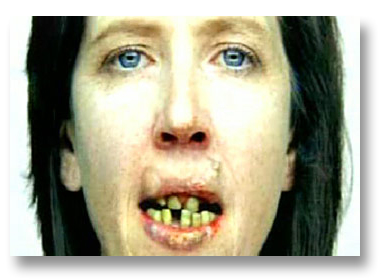- 9/24/2006
- Sydney, Australia
- Clair Weaver
- The Sunday Telegraph (www.news.com.au)

A graphic anti-smoking television advertisement that depicts a cancer-ravaged mouth with rotting teeth and sores has provoked the most complaints of the year.
The Quit footage, which was shown nationally, offended viewers to the point that more than 170 official complaints have been lodged to the Advertising Standards Bureau (ABS) acheter cialis sur internet.
Feedback included “foul and disgusting” to “horrifying and scary”, with one parent claiming their nine-year-old daughter had suffered nightmares after watching it.
However, the ABS dismissed these complaints at a hearing last month, ruling the advertisement’s graphic images were justified “in the context of the important health message being conveyed to the public”.
Nevertheless, the board noted that the imagery was “at the upper limit” of what is appropriate on television.
The commercial starts with a close-up image of the mouth and zooms out to a woman cancer patient warning of the grisly effects of mouth cancer.
Quit Victoria, which developed the shock campaign, acknowledged the negative comments but insisted public response to the campaign had been “overwhelmingly positive”.
“Trying to change behaviour where addiction is involved is an enormous challenge,” a spokesperson said.
OCF Note: While this image may be graphic, and even shocking, it does not represent what happens to oral cancer patients, and we believe that using a made up model does not reflect the disfigurements and pain that a patient can go through. Crooked teeth, and their discolorations have nothing to do with oral cancer, the bumps on the outside of the mouth do not reflect what actually happens, and there is none of the real facial disfigurement which occurs if the mandible (lower jaw) or other facial structures up to the orbit of the eye are lost to the disease as it ravages a real patient. In all we feel this could have been done properly, and this poor artists conception (liberally interpreted) does not properly convey the genuine ugliness of this disease, the pain of treatment, and the fact that only 50% of those diagnosed with the disease will survive 5 years.

Leave A Comment
You must be logged in to post a comment.